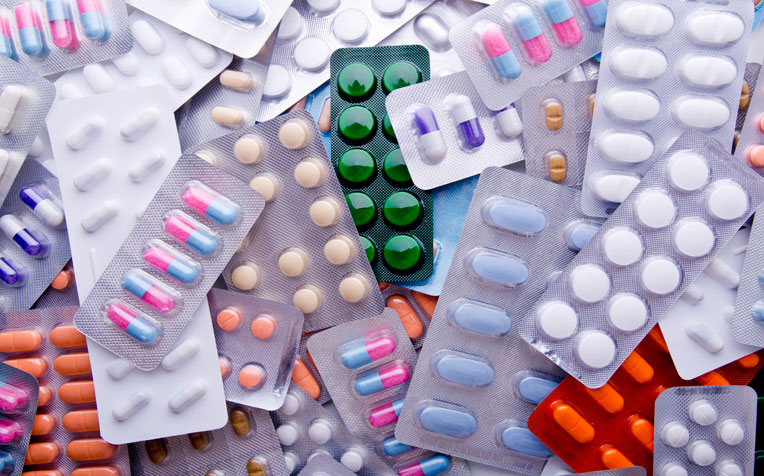
You may have noticed that some commonly prescribed drugs for long-term conditions such as diabetes and high blood pressure cost more in Singapore than across the Causeway in Malaysia, or other parts of the world. There are a number of reasons why the same drugs are priced differently across countries.
Drugs fall into two broad categories – generic drugs and branded drugs. Generic drugs, which are copies of branded drugs whose patents have expired, are generally inexpensive throughout the world. Branded drugs are much more expensive because of the start-up investment, research, and marketing expenses that go into producing a new drug from scratch and bringing it onto the market.
Most pharmaceutical companies set the price for a branded drug based on a country’s ability to pay for that drug. So, it can cost more in one country than in another.
Drug makers expect countries with a high per capita GDP to pay more for branded drugs than countries with a low per capita GDP. This can lead to a huge price differential between countries. This price differential is further amplified by the difference in foreign exchange rates.

Focused on getting a handsome return on their investments, pharmaceutical companies are keen to sell branded drugs at the highest price a market can bear. Say, for example, the best available treatment for a particular condition is surgery that costs $30,000, and there is a 5 per cent risk that the patient undergoing the surgery may die. Now, if a pharmaceutical company develops a drug that is as effective and has only a 1 per cent mortality risk, even if that drug costs 30 cents to produce, the company will price its new drug regime higher than $30,000, because the best available treatment is the benchmark, explains Dr Jeremy Lim. Dr Lim, the principal consultant at Insights Health Associates in Singapore, is the author of the book, Myth or Magic: The Singapore Healthcare System, which will be available in bookstores in mid-September.
“The pharmaceutical company would think that, if, its drug is as effective as the current surgical treatment and has five times lower mortality risk, it deserves to charge a premium. Hence, the company would charge $30,000 plus whatever premium it deems to be appropriate,” says Dr Lim, whose previous experiences include being a senior consultant with the Ministry of Health (MOH) in Singapore, and director of research and education at SingHealth, Singapore’s largest healthcare group.
Another reason why branded drugs cost less in some countries, and more in others, is that, in certain countries, people can buy prescription drugs over the counter because of lax regulatory controls. Although laws in those countries may state that certain medicines are to be made available by prescription only, or by a registered pharmacist, in practice, it is often possible to get those drugs over the counter. This means, a patient does not have to bear the costs involved in having the drug prescribed to him.
“When it is a prescription-only drug, the administrative cost goes up because you need a doctor to prescribe the medicine, a pharmacist to dispense it and the storage of the drugs needs to be audited and monitored, and you need paper trails. The control mechanisms are tighter and they cost money,” says Dr Lim.
A third reason why drug prices vary from country to country is limited economies of scale resulting from smaller volume drug purchases. The more a healthcare provider, whether it is the government or a private hospital, buys of a particular drug, the cheaper the price gets.
Government subsidies for drugs also play a role in price differences. The Singapore government does not subsidize branded drugs unless they fall within the Standard Drug List maintained by MOH, or come under one of the government’s subsidy schemes. Patients taking a non-subsidized branded drug would therefore have to pay the full price of that drug, and hence, would end up paying more than patients in a country where that drug is heavily subsidized, Dr Lim notes.
Even within a single country, the same drug can cost differently at different hospitals. One reason for this is that hospitals buying more of a particular branded drug can benefit from economies of scale. According to Dr Lim, hospitals mark up the selling price of their drugs up to about 35 per cent to defray operating costs.
“While this percentage formula is administratively easy for hospitals and healthcare facilities, it can lead to substantial cost pressures on patients. A 30 per cent mark-up of a one-dollar drug is 30 cents, but the same mark-up for a thousand-dollar drug is $300,” he adds.
Related link,
Crestor, Lipitor, Nexium Plavix & Propecia price in Johor Bahru (JB)Source: http://theindependent.sg

painsandtrippymedications the best place for all psychedelic products
ReplyDeleteBuy quality DMT vape pen online
Buy DMT crystals here
Buy quality LSD vials here
Buy ketamine crystals here
Buy penis envy mushrooms here
Buy LSD blotters here
Buy mescaline powder here
Buy amanita muscaria here
Buy mdma ecstasy online